From Stevie Van Zandt to Edward Hopper
A new film and some Cape Cod imaging.
Greg Mitchell is the author of more than a dozen books (see link) and now writer/director of three award-winning films aired via PBS, including “Atomic Cover-up” and “Memorial Day Massacre” (recently nominated for an Emmy). You can still subscribe to this newsletter for free.
He’s kept it pretty quiet on this very active Twitter feed and elsewhere, but the first full doc on my old pal Steve (“Stevie” “Little Steven” “Miami Steve” “Silvio Steve”) Van Zandt just had its premiere at the Tribeca Film Festival and we presume it will be coming to HBO soon. With the pause in the current Bruce tour, he was able to come back to NY for it. See the trailer here:
More on Steve in a further posting but for now I will note that we met back in December 1972 when Peter Knobler and I trekked down to Bruce’s apartment in Jersey after meeting and hearing him at Sing Sing and then Kenny’s Castaways in NYC before the release of his debut album. This led to Crawdaddy’s historic 7000-word “Who is Bruce Springsteen?” feature. We caught a Bruce band (not yet know as E Street) rehearsal that afternoon and the first run-through of “Kitty’s Back,” and that evening Stevie—who had just turned 22, a good guy with slicked back black hair who struck us as a stereotypical “greaser”— dropped by Bruce’s little pad for a chat. We probably talked about their time together in Steel Mill and other local bands.
Then we all went off to catch a deep blues set by him and Johnny Lyon, billed as “Southside and Steve,” in a local dive bar. Maybe half a dozen other customers were there as well. The following year he toured with the classic rock group The Dovells (of “Bristol Stomp” fame). He would not join the E Streeters for another two years or so. By then he was producing the Jukes and had earned the “Miami Steve” nickname, with Hawaiian shirts (“Reminds me that I hate the cold”) a staple.
We will leave for another time our Crawdaddy softball doubleheader vs. E Streeters, which we swept, with Stevie in CF and Bruce at 2B and pitching, Steve sometimes with a drink in hand…
Great recent run for Steve, what with his memoir (which sold well) and that major “60 Minutes” profile and more. Now the film.
On a slightly different subject: On Friday, I promised a few photos from our trip to Cape Cod last week. We’ve been going up there fairly regular since the early 1990s when I started working on my first book with the great Robert Jay Lifton, “Hiroshima in America.” This took us to Wellfleet (where he then lived) many times and now most often to Truro (his current home, where in his 90s he still produces a new book every other year and is now hard at work on another project).
Still, the most famous Truro resident remains my home boy (born and raised in Nyack, N.Y.) Edward Hopper. His house there, where he lived with his wife Jo and painted local scenes for decades, is almost hallowed ground for some.
Here are a few famous Hopper paintings of the area with my own images from a few days ago.
“The Long Leg,” past the final little lighthouse off Provincetown.
“Highland Light”: Its position at the edge of the water, when Hopper painted it, became tenuous due to a collapsing dune so it was moved hundreds of feet to safety, now bordered by a golf course.
“Mouth of Pamet River”: Very near his home. That dwelling is gone but nearby today is a smaller one—for the harbor master (a yacht club is now based there).
“Rich’s House.” This is now the site of the Truro Winery which we have visited several times and purchased items in the shop in this house. “See the tree, how big it’s grown.” The soaring structure at the right now has huge wine barrel displayed on top.



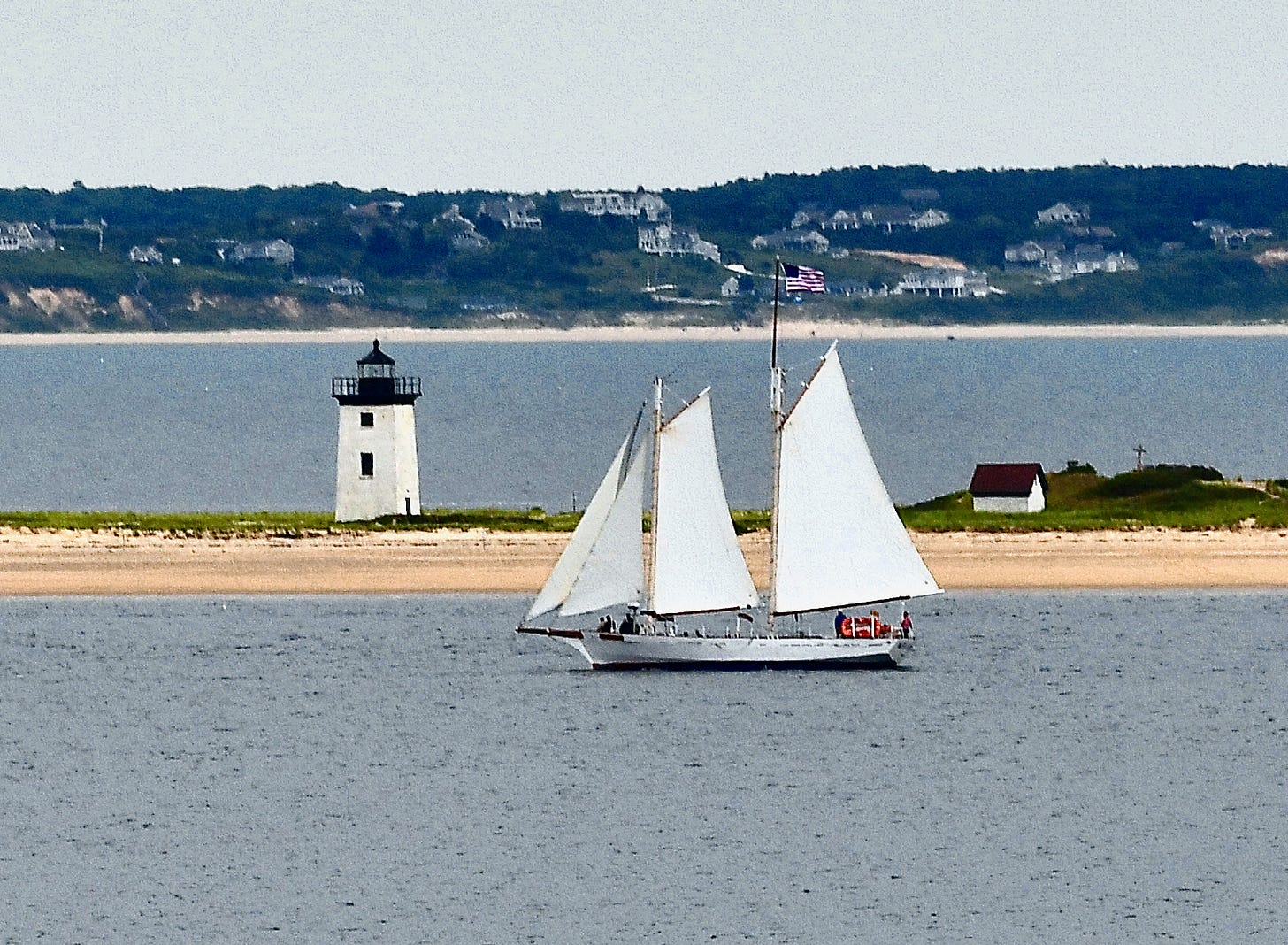
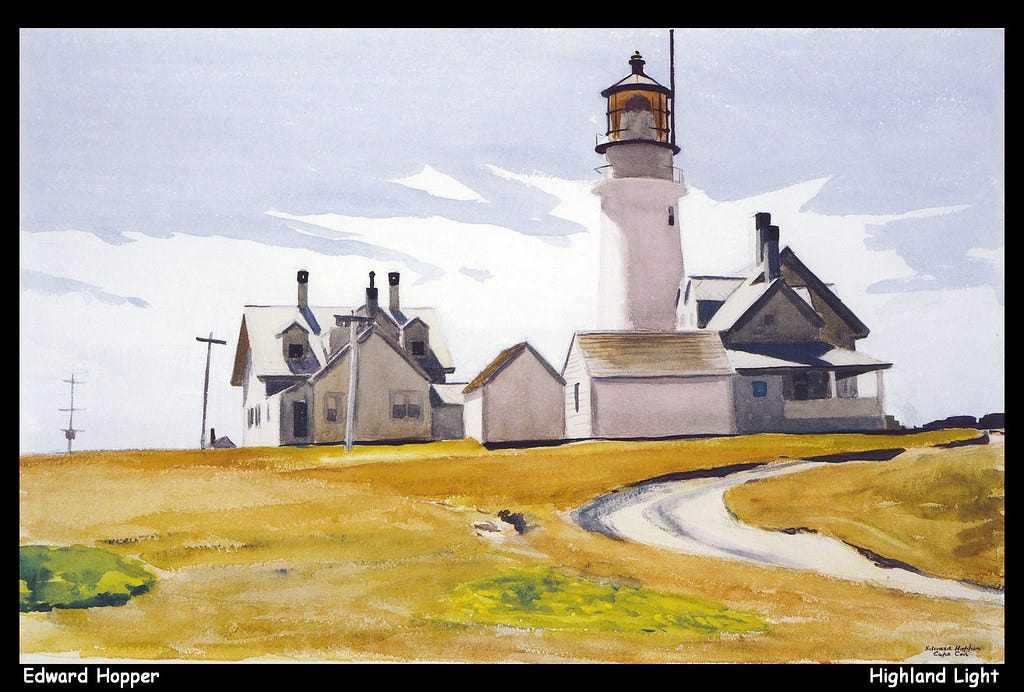
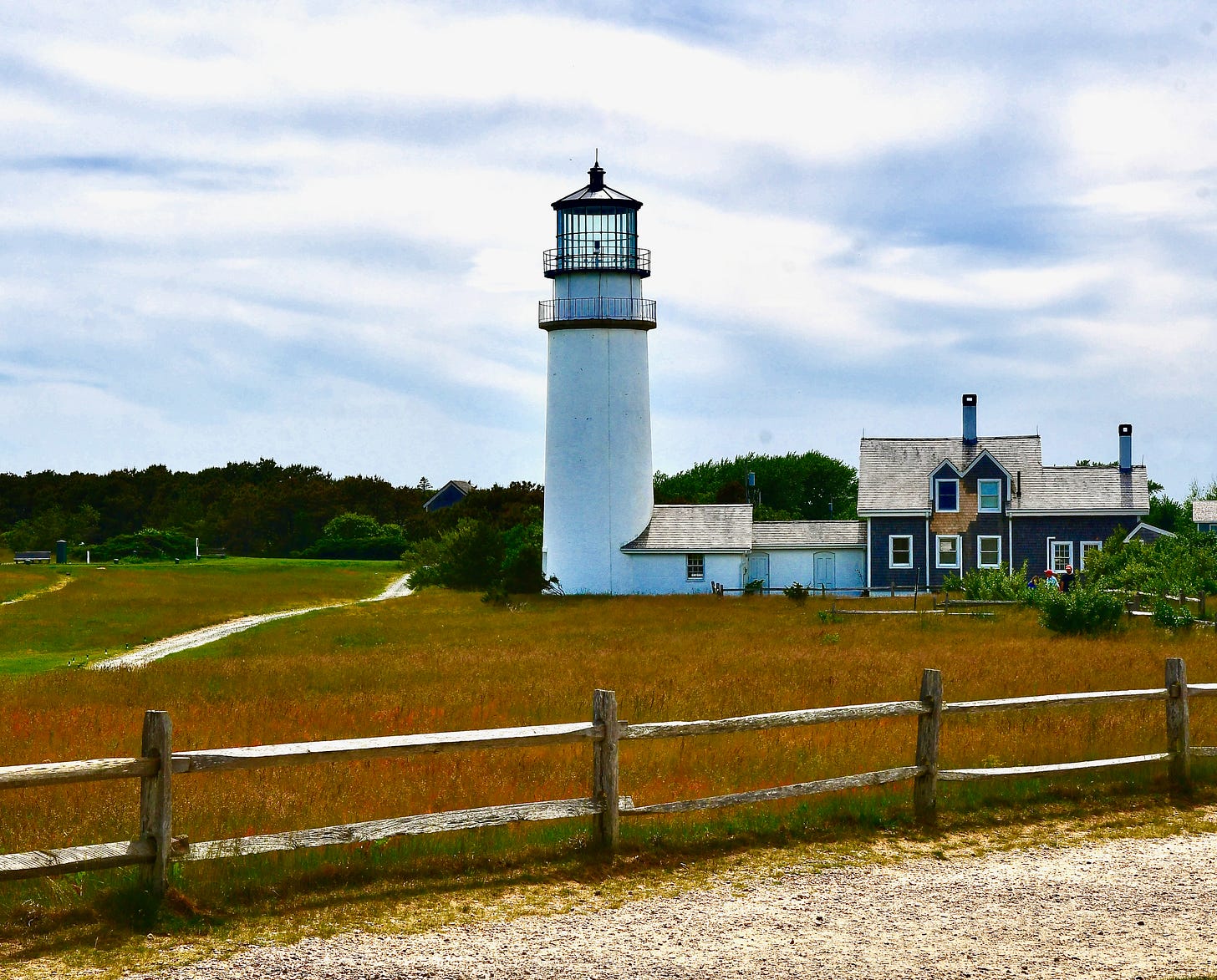

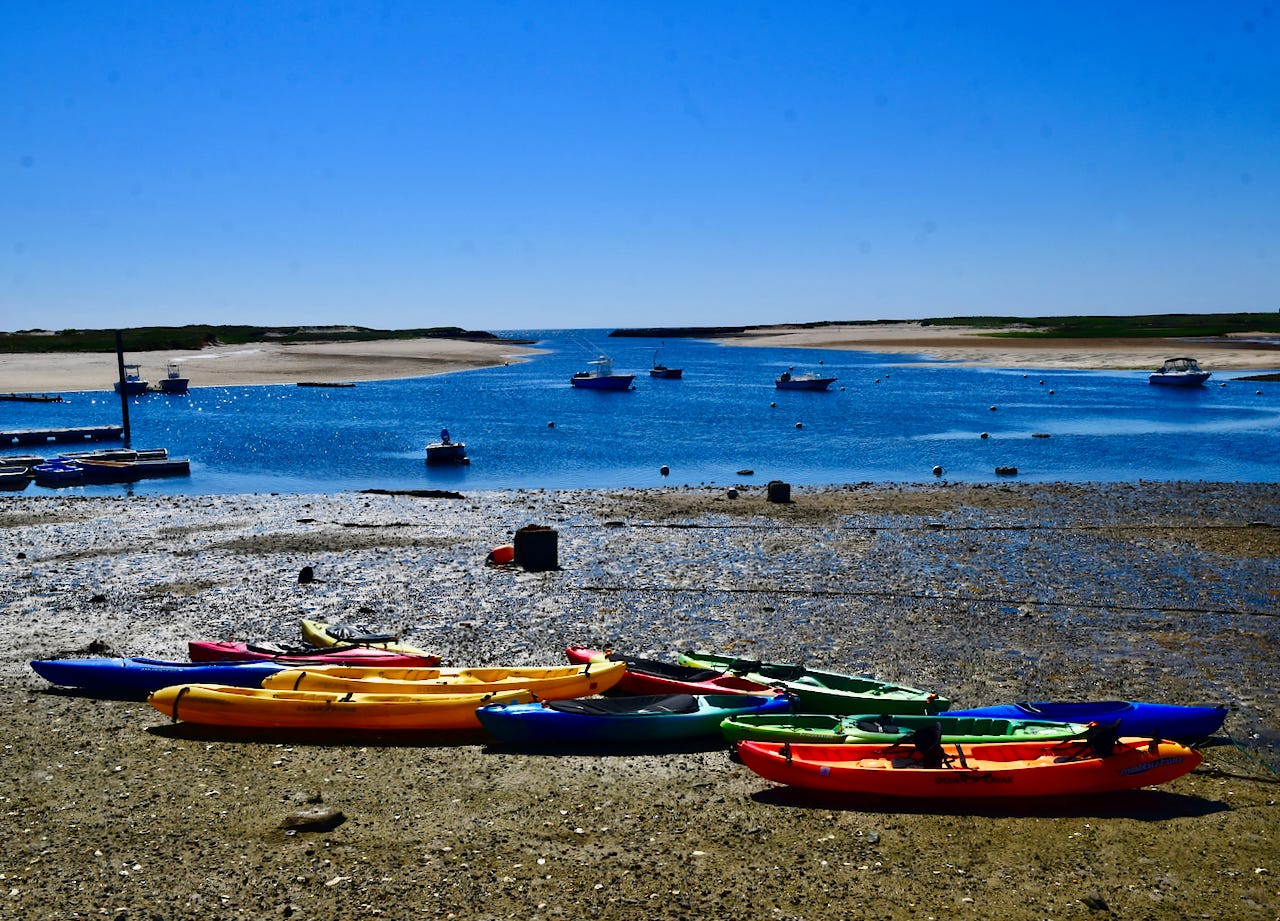
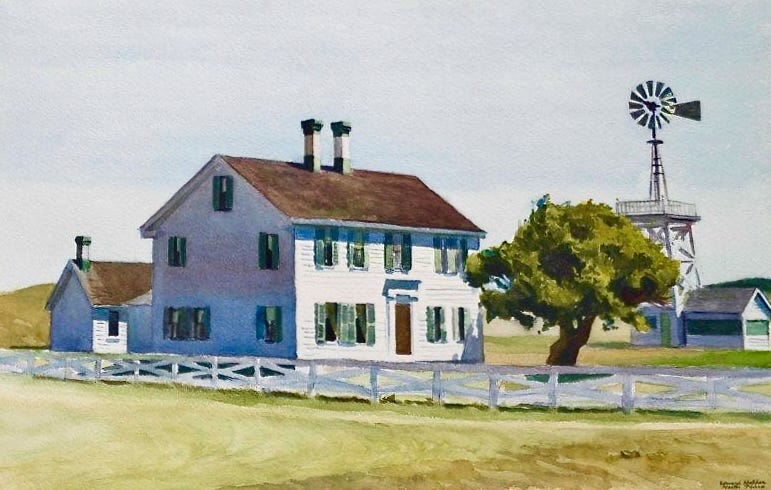
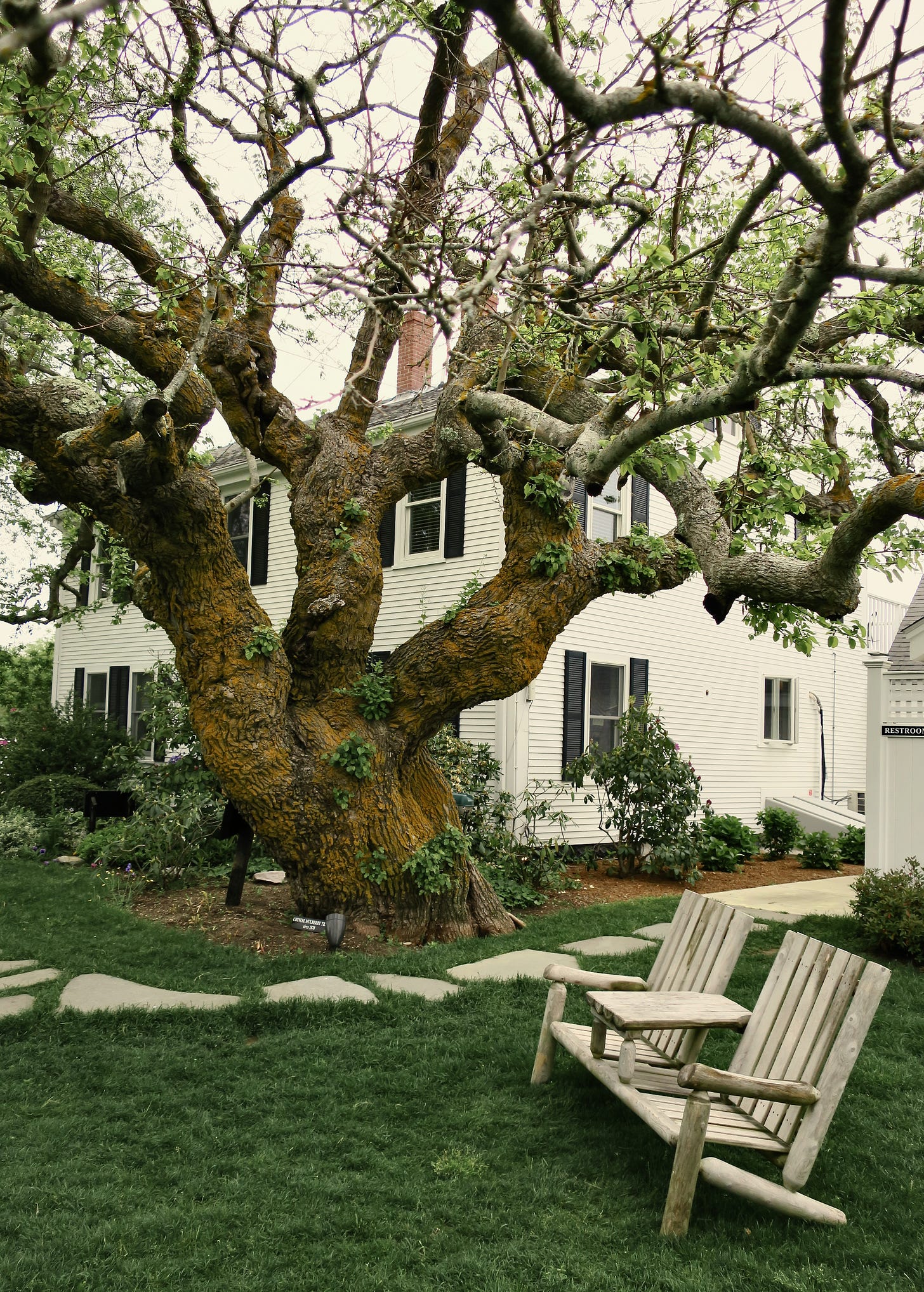
beautiful photos -- just nothing like the cape and islands... period.
Fascinating sets of paintings/photos. Thank you. And your mention of Truro made me think of this passage from Mary McCarthy about the difficulty of writing a memoir when you were orphaned at an early age: "is our parents, normally, who not only teach us our family history but who set us straight on our own childhood recollections, telling us that this cannot have happened the way we think it did and that that, on the other hand, did occur, just as we remember it, in such and such a summer when So-and-So was our nurse. My own son, Reuel, for instance, used to be convinced that Mussolini had been thrown off a bus in North Truro, on Cape Cod, during the war. This memory goes back to one morning in 1943 when, as a young child, he was waiting with his father and me beside the road in Wellfleet to put a departing guest on the bus to Hyannis. The bus came through, and the bus driver leaned down to shout the latest piece of news:“They’ve thrown Mussolini out.” Today, Reuel knows that Mussolini was never ejected from a Massachusetts bus, and he also knows how he got that impression. But if his father and I had died the following year, he would have been left with a clear recollection of something that everyone would have assured him was an historical impossibility, and with no way of reconciling his stubborn memory to the stubborn facts on record."